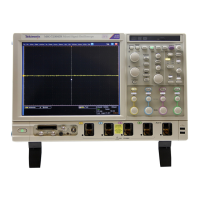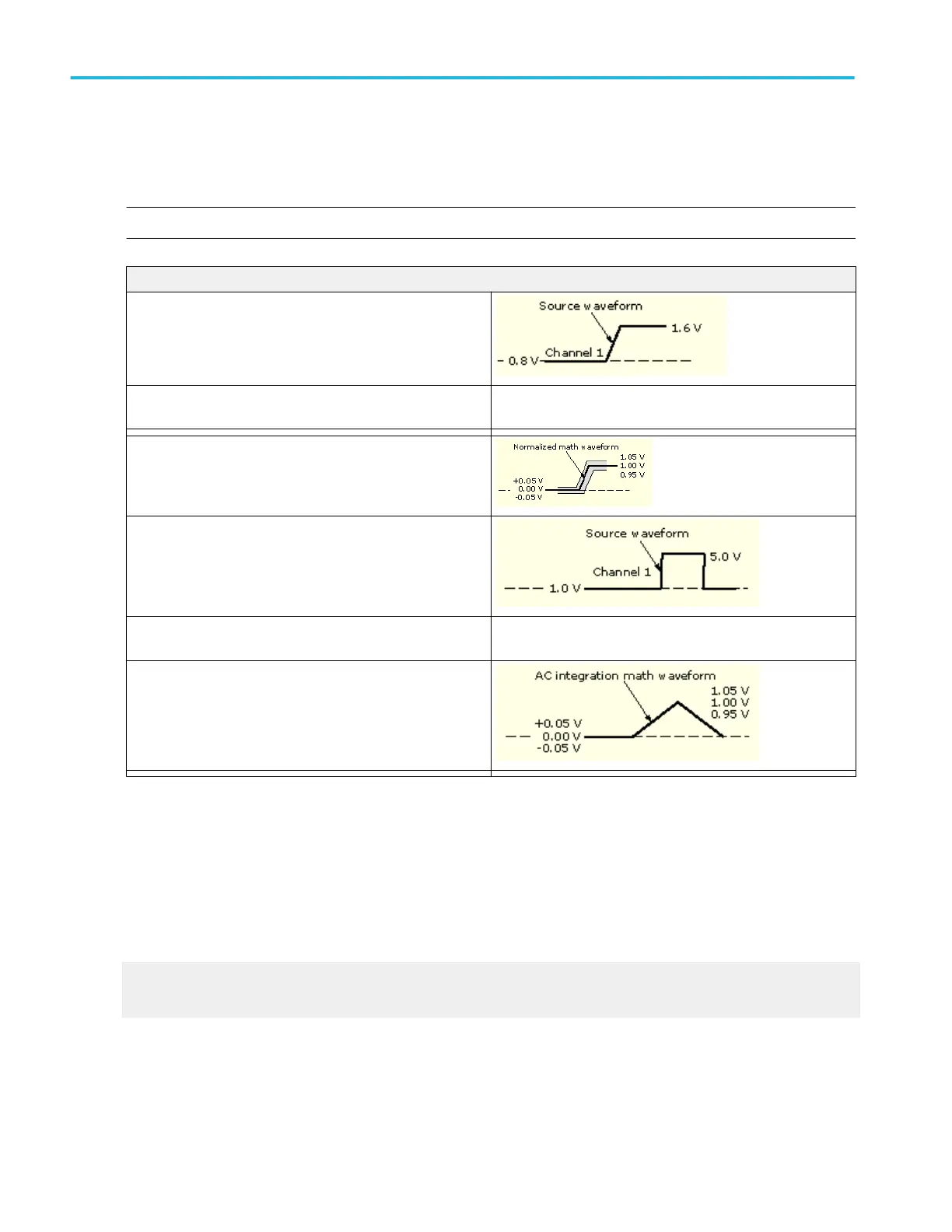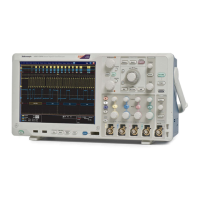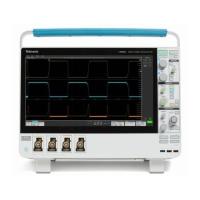Typical math waveforms
You create math waveforms when you create a math expression. You do so by applying numerical constants, math operators
and functions to operands. You can display and manipulate these derived math waveforms much like you can the channel and
reference waveforms (see Using Math Waveforms).
NOTE. Math calculations are not available on digital channels.
Some examples of typical math waveforms
To normalize this waveform:
Enter this math expression: (Ch1- Meas1)/ Meas2, where Ch1 is the waveform shown
above Meas1 = Low of Ch1 Meas2 = amplitude of Ch1
And get this math waveform:
To simulate AC coupling on this waveform:
Enter this expression: Intg(Ch1-Avg(Ch1)), where Ch1 is the waveform shown above
Avg is the average function
And get this math waveform:
Offset, position, and scale. The settings that you make for offset, scale, and position affect the math waveform you obtain. Here
are some tips for obtaining a good display:
■
Scale and position the source waveform so that it is contained on the screen. (Off-screen waveforms may be clipped,
resulting in errors in the derivative waveform.)
■
Use vertical position and vertical offset to position your source waveform. The vertical position and offset will not affect your
derivative waveform unless you position the source waveform off screen so that it is clipped.
What do you want to do next?
Learn about math waveform sources.
Go to a step-by-step procedure for creating math waveforms.
Oscilloscope reference
702 DPO70000SX, MSO/DPO70000DX, MSO/DPO70000C, DPO7000C, and MSO/DPO5000B Series

